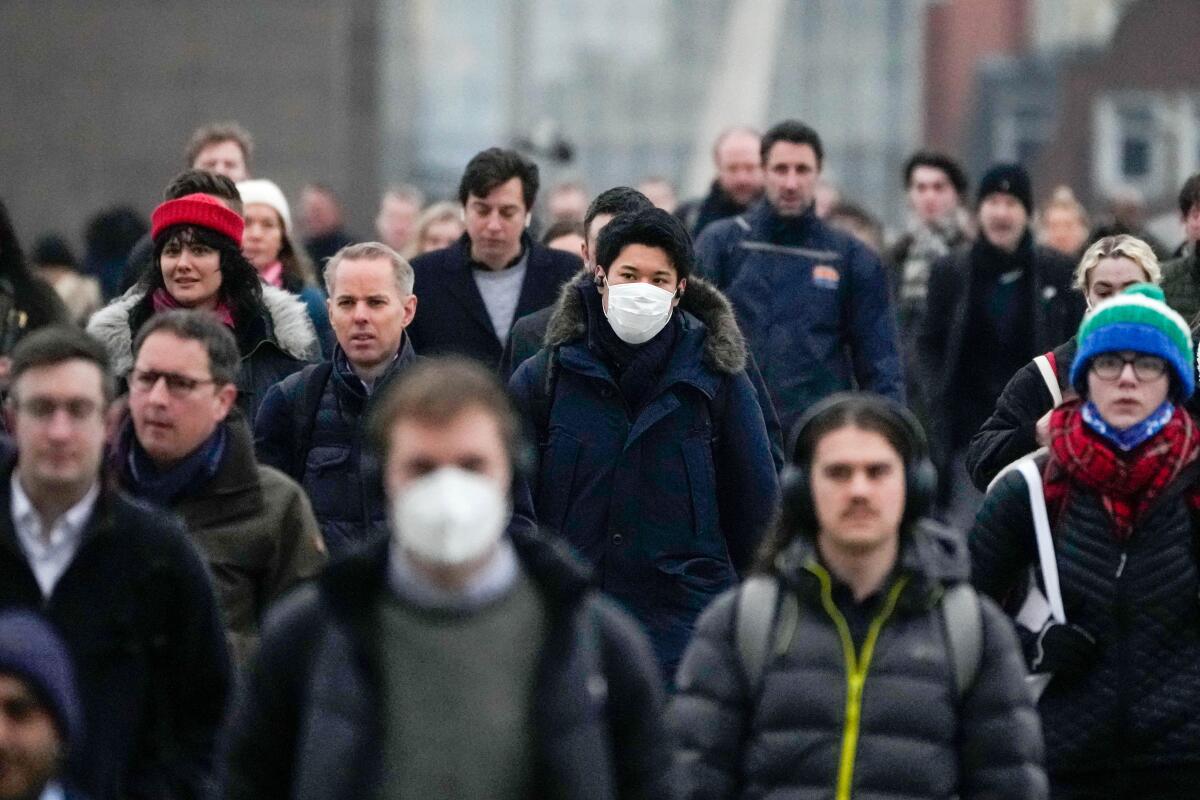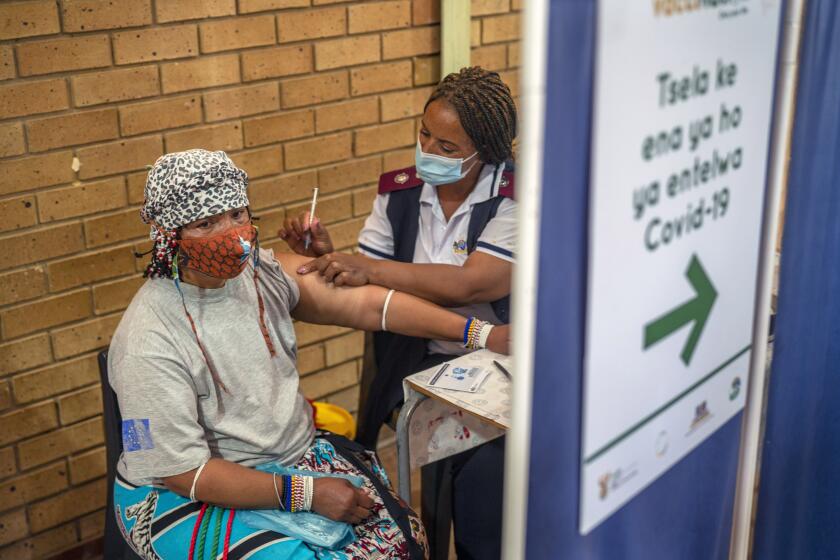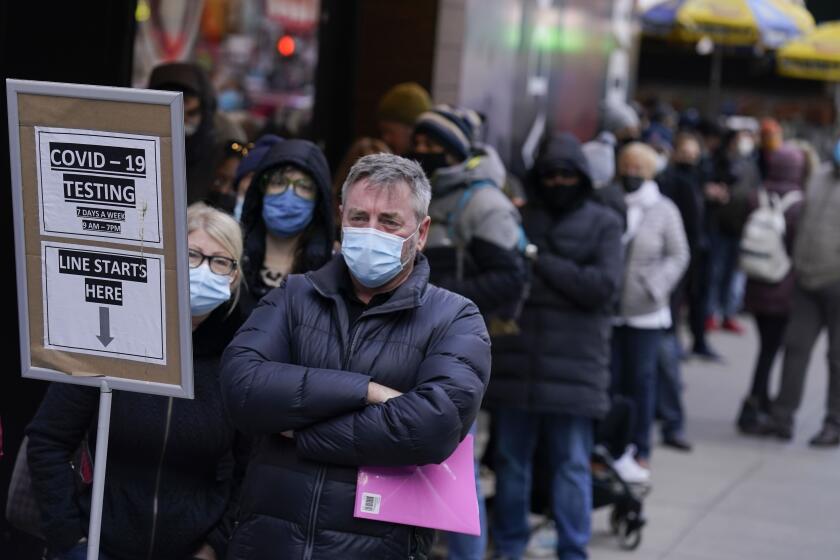Pandemic may become more manageable after Omicron wave ends, WHO says

World health officials are offering hope that the ebbing of the Omicron wave could give way to a new, more manageable phase of the COVID-19 pandemic, even as they warn of difficult weeks ahead and the possibility that another, more dangerous variant will arise.
In the U.S., cases have crested and are dropping rapidly, following a pattern seen in Britain and South Africa, with researchers projecting a period of low spread in many countries by the end of March. Though U.S. deaths — now at 2,000 each day — are still rising, new hospital admissions have started to fall, and a drop in deaths is expected to follow.
The encouraging trends after two years of coronavirus misery have brought a noticeably hopeful tone from health experts. Rosy predictions have crumbled before, but this time they are backed by what could be called Omicron’s silver lining: The highly contagious variant will leave behind high levels of immunity.
On Sunday, Dr. Anthony Fauci talked on ABC “This Week” about a “best-case scenario” where COVID-19 would fall to manageable levels so the United States could get “back to a degree of normality.”
And on Monday, the World Health Organization issued a statement anticipating an end to the “emergency phase” of the pandemic this year and saying that the Omicron variant “offers plausible hope for stabilization and normalization.”
Both Fauci and the WHO’s Europe regional director, Dr. Hans Kluge, cautioned that new variants are likely to emerge, but with vaccination, new drug therapies and — during surges — testing and masks, the world could reach a less disruptive level of disease in which the virus is, as Fauci put it, “essentially integrated into the general respiratory infections that we have learned to live with.”
With the fast-spreading but less virulent Omicron variant, the coronavirus may finally be cutting humanity a little slack.
In the U.S., new cases are averaging a still extraordinarily high 680,000 a day, down from an all-time peak of more than 800,000 a little more than a week ago.
The places in the U.S. where Omicron struck first are seeing the sharpest declines. New cases in the Northeast are nose-diving, while other states — Arizona, Texas, Oregon, Kansas and North Dakota among them — are still waiting for relief.
Falling too are new U.S. hospital admissions of patients with confirmed COVID-19 infections. They are averaging nearly 20,000 per day, down about 7% from the previous week, according to the Centers for Disease Control and Prevention.
Those numbers include patients who went to the hospital for other reasons and tested positive. But even after accounting for these incidental infections, the trend is hopeful.
One influential model projects that nearly all nations will be past the Omicron wave by mid-March, including China and other countries with “zero COVID” policies. The wave will leave behind high levels of immunity — both from infection and vaccination — that could lead to low levels of transmission for many weeks or months.
“What do we end up with at the end of this?” said Dr. Christopher Murray of the University of Washington, who developed the closely watched Institute for Health Metrics and Evaluation model. “We end up with the highest levels of global immunity that we’ve seen in the pandemic.”
The model estimates that 57% of the world’s population already has been infected with the virus at least once.
Scientists warn that Omicron’s whirlwind spread across the globe practically ensures it won’t be the last worrisome coronavirus variant.
Another research group, which combines several models and shares the projections with the White House, predicts a strong decline in U.S. infections by April, unless a new variant emerges that can sidestep the growing levels of immunity.
“It would be dangerous to forget that possibility, as it has caught us before,” said Katriona Shea of Pennsylvania State University, a leader of the team that pulls together the models.
She noted too that the projections show 16,000 to 98,000 more Americans dying before the Omicron wave is through. The U.S. death toll stands at close to 870,000.
“Even if we project a more optimistic future, right now we still have a lot of COVID spreading, a lot of strain in our hospital systems, and our deaths have not yet peaked,” said Lauren Ancel Meyers, director of the University of Texas COVID-19 Modeling Consortium.
“There’s still a lot of pain before Omicron has run its course,” she said, but added: “It’s very plausible that Omicron will be a turning point in terms of our relationship with this virus.”








